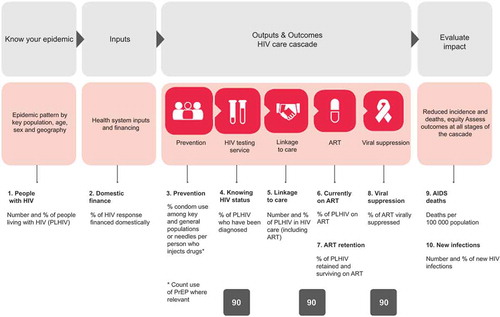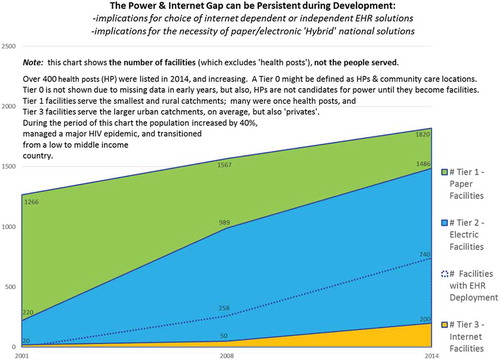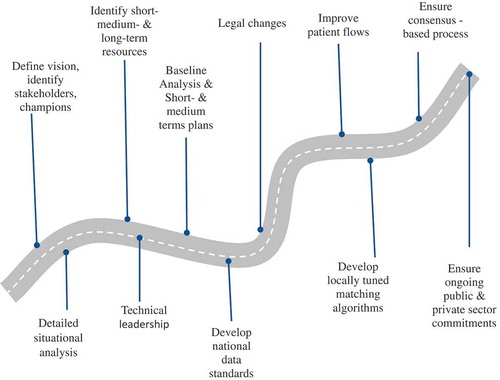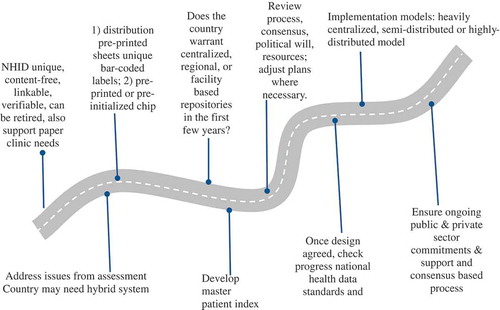Figures & data
Figure 1. Ten WHO indicators assessing the ’90–90-90’ program showing linkages with other sources of data including case based surveillance and patient monitoring.

Box 1. The five basic functions and seven core elements of a NHID [Citation20].
Box 2. Baseline assessment of existing national health information infrastructure.
Box 3. Different models for implementing a NHID [Citation20].
Box 4. Potential benefits of identifier chip cards.
Box 5. Understanding of shared benefits, risks and actions.




